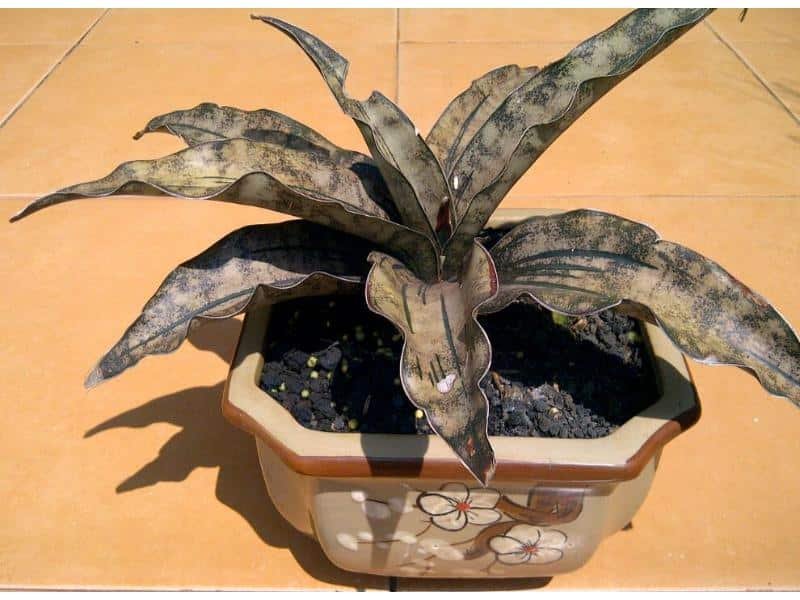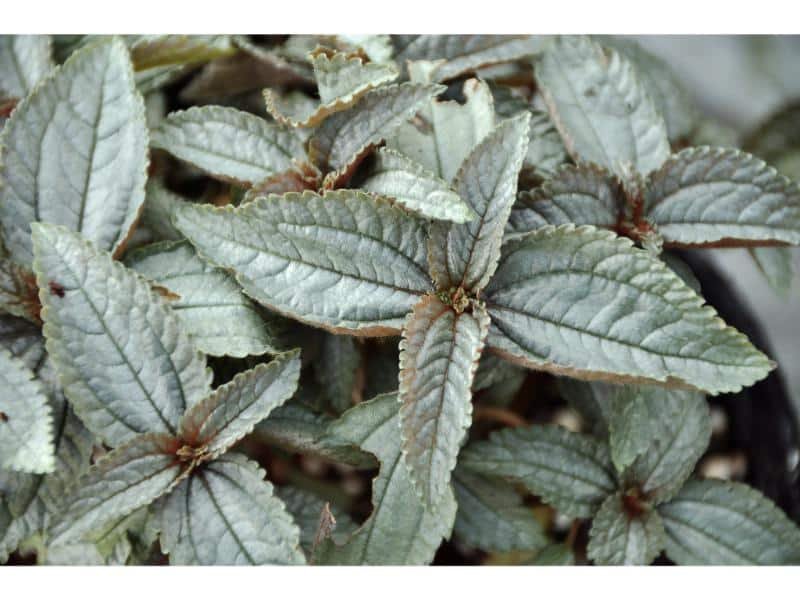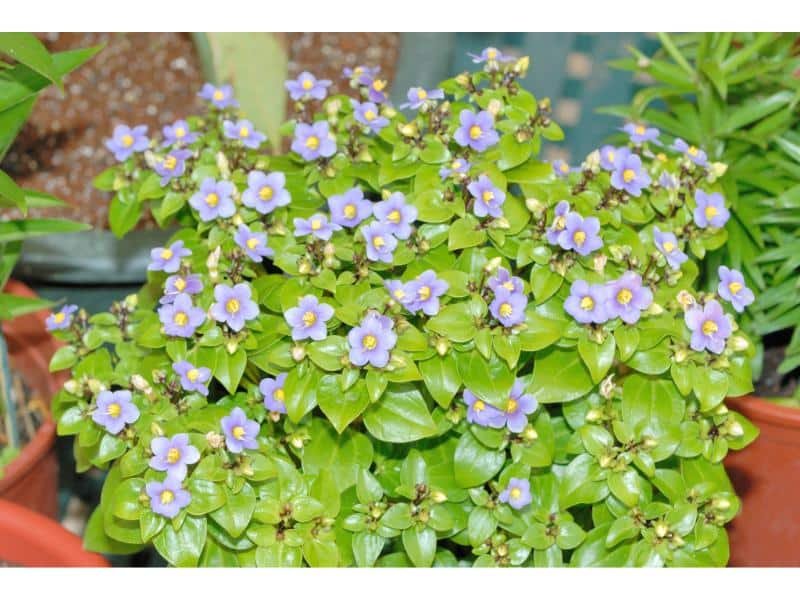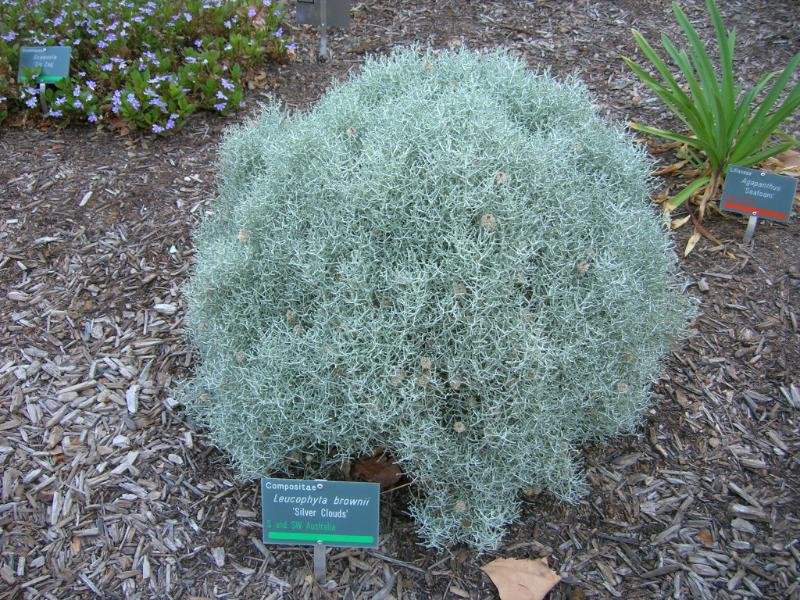Table of Contents
Top 10 Silver Leaf Plants with Purple Flowers
| Plant | Features |
|---|---|
| Silver Squill (Ledebouria socialis) | Delightful green & silver speckled leaves, purple bell-shaped blooms |
| Silver Skies Plant (Pilea glauca) | Olive green leaves with silver marbling, tiny purple flower spikes |
| Silver Spear Sanseveria (Sanseveria kirkii pulchra) | Gray, green & silver arching foliage, purple summertime tube flowers |
| Silver Cloud Plant (Pilea glauca) | Large metallic gray-green leaves with dark veins, eggplant-purple blooms |
| Silver Earth Violet (Exacum affine) | Large silvery rounded leaves, abundant royal purple blooms |
| Silver Philodendron (Philodendron hederaceum) | Heart-shaped green & silver leaves, unique white & purple flower bracts |
| Silver Skies Tradescantia (Tradescantia albiflora) | Striped green & silver trailing stems, bright magenta-purple 3-petaled flowers |
| Silver Spear Plant (Sansevieria cylindrica) | Unique silvery cylindrical upright leaves, pinkish-purple tubular blooms |
| Silver Lady Fern (Blechnum gibbum) | Graceful fronds with silver & red colors, fuzzy brown sporangia structures |
| Silver Streak Vine (Dichondra argentea) | Silver purple leaves with green veins, spring blooms in shades of purple |
I’ve always loved having indoor plants to liven up my home. There’s something special about nurturing a living thing and watching it grow right in your own space. Over the years, I’ve found that I’m especially drawn to silver-leaf plants with bold, beautiful purple blooms. The shimmery silver foliage pairs so nicely with the rich jewel-tone flowers. These plants make great statement pieces in any room.
In this article, I’ll share my top 10 favorite silver leaf plants with purple flowers, along with some care tips and personal stories about growing these beauties. Whether you’re an experienced indoor gardener or are looking to add your first houseplant, you’ll find a perfect purple-flowering fit here!
Silver Squill (Ledebouria socialis)

The Silver Squill is one of my all-time favorite houseplants. This South African native has delightfully speckled and striped green and silver leaves that form a lush clump. While the foliage alone is stunning, in late winter or early spring, Ledebouria socialis sends up spikes of tiny bell-shaped blooms in a rich amethyst purple. I like to call them little grape hyacinth flowers.
I first discovered silver squills a few years ago when I spotted one at a local nursery. I was so taken by the unique markings and vibrant undersides of the foliage. And when I learned it would soon bloom with purple flowers, I just had to bring it home!
I’m happy to report my silver squill has thrived on my bright, sunny windowsill. The succulent-like leaves hold water, so I’m careful not to overwater. Every late winter, the plant rewards me with dozens of sweet purple blooms that last for weeks. It always draws compliments from guests!
Silver Skies Plant (Pilea glauca)

The delightfully uncommon Pilea glauca, also known as silver skies plant, is another stunner. This easy-to-grow houseplant boasts olive green leaves with pronounced silver marbling and veining. The foliage forms a bushy mound that looks gorgeous in any container.
Perhaps my favorite thing about Pilea glauca is its tiny purple flower spikes that emerge in late winter through early spring. The blooms are so tiny and numerous that from a distance, it looks like a purple haze hovering over the plant! It’s such a unique display that always makes me smile.
I picked up my first silver skies plant a few years ago at a plant swap. It has multiplied steadily to form a full, lush pot. While most pilea like some humidity, I’ve found silver skies to be very tolerant of my dry household air. As long as I water when the soil is partly dry, this beauty thrives on any sunny to partly sunny windowsill.
Silver Spear Sanseveria (Sanseveria kirkii pulchra)

If you’re looking for an ultra-low-maintenance silver leaf beauty, you can’t go wrong with silver spear Sanseveria. This virtually indestructible succulent has arching leaves in various shades of gray, green, and silver that emerge from the soil like spears. The foliage elegantly curves and fans out as it reaches toward the light.
One of my favorite things about Sanseveria kirkii is that every few years in early summer, mature plants will send up a slender 2-foot-tall flower spike covered in dozens of tubular rich royal purple blooms. It’s quite a dramatic display that lasts for weeks!
I’ve had a silver spear sanseveria for many years that I inherited from my grandmother. It has been passed down through 3 generations of gardeners in my family thanks to its indestructible nature. These plants tolerate just about any light levels and are very drought tolerant. Overwatering is easier to do than underwatering with this beauty. As long as you don’t keep it soggy wet, silver spear should thrive for decades to come, blooming when mature.
Pilea pubescens ‘Silver Cloud’

With its large round leaves marked by prominent dark green veins and silver-gray mottling, the silver cloud plant lives up to its name. The foliage has an almost holographic shine to it in the right light. As an added bonus, Pilea glauca sends up tiny spikes of flowers in a rich eggplant purple shade.
I grow my silver cloud in a sunny east-facing window where it receives bright indirect light most of the day. The colorful leaves have more intense silver markings with brighter light. One thing I love about this plant is that the leaves face upwards, so the undersides are always on display.
In terms of care, I make sure to water my silver cloud whenever the top inch of soil becomes dry. It prefers soil that retains some moisture, so I mix in a little cococoir and orchid bark to my potting blend. As long as I give it bright indirect light and avoid under or overwatering, my silver cloud thrives!
Silver Earth Violet (Exacum affine)

This unique violet relative from Asia makes a fabulous houseplant known for its lush carpet of rounded silver-gray leaves and loads of bright royal purple flowers that bloom spring through fall. Exacum affine does best in part sun to lightly shaded spots indoors and thrives in high humidity. Luckily it is perfectly suited for terrarium culture if your home’s air tends towards the dry side like mine.
I first encountered silver earth violet years ago when shopping at a local greenhouse. I immediately fell for the striking metallic sheen of the foliage and had to bring one home. Within a few months of situating my plant in a small tabletop glass terrarium, it began pumping out vivid little purple blooms by the dozens. It has since become a favorite plant of mine, always igniting joy when I spot those jewel-tone flowers.
Silver Philodendron (Philodendron hederaceum)

The gorgeous heart-shaped leaves of silver philodendron feature dark green veins against a background of satiny silver. New foliage emerges in a flushed pink tone. While the leaves alone make this a striking houseplant, mature specimens will also produce occasional sprays of tiny white flowers nestled in rich purple bracts. It’s quite a unique display!
I inherited a mature silver philodendron from my aunt which she’d had for over 15 years. It’s a vigorous climber that I have trained onto a large moss pole in a bright east-facing window. This fast grower benefits from annual pruning to keep growth tidy and full.
One thing I appreciate about silver philodendron is how unfussy it is. I water whenever the top few inches of soil become dry. Between its tropical origins and the moisture-loving nature of aroids, this beauty appreciates humid conditions. Luckily my eastern exposure coupled with frequent misting provides adequate humidity. For best results, maintain 50% humidity or higher if possible.
Silver Skies Tradescantia (Tradescantia albiflora)

With striking striped green and silver foliage and a trailing habit, this unique spiderwort relative makes a fabulous hanging basket specimen. Known for its tolerance to neglect, Tradescantia albiflora is a great option if you tend to have a black thumb like some of my friends.
While the metallic striped leaves are the main show for Silver Skies tradescantia, I find the flowers to be an added bonus. Tucked into the foliage axils you’ll find clusters of bright magenta-purple buds that open into vibrant three-petaled blooms. The color combo is quite striking!
I have my silver skies tradescantia planted in a hanging basket in front of an east-facing window. It thrives on the bright indirect light. One thing I appreciate is how unfussy this plant is. If I forget to water for a bit too long, the foliage just gracefully wilts as a reminder rather than perishing. A quick drink of water perks it right up again! I’d recommend this beauty to both new and seasoned plant parents.
Silver Spear Plant (Sansevieria cylindrica)

The uniquely shaped upright leaves of Sansevieria cylindrica make it one of the most distinct Sansevieria varieties. Brilliant silver-green cylindrical spears emerge from the soil, resembling silvery tongues! As a succulent, this drought-tolerant beauty needs little care and will thrive for years. Give it bright light and water only when dry.
While the striking cylindrical foliage is reason enough to add silver spear sansevieria to your collection, mature plants will also bloom in summer. Stalks emerge with buds that open into sweetly fragrant tubular pinkish-purple flowers. The blooms last for weeks and attract pollinators with their sweet scent.
If you’d like to add an ultra-low maintenance silver leaf specimen to your indoor garden, look no further than silver spear sansevieria. I’ve had mine for over 5 years and it continues to multiply steadily into a striking display. Just be sure to give those sharp foliage tips a wide berth!
Silver Lady Fern (Blechnum gibbum)

For a beautiful and easy-care silver leaf plant, consider adding a silver lady fern to your home’s garden. This Australian native fern has a gracefully arching habit with each frond dichotomously forking as it reaches outward. The fronds emerge with a striking metallic silver coloration on top and wine-red undersides. Within a few weeks, the ferns age to green but still maintain fabulously contrasting silver veins.
In addition to the elegant foliage, silver lady ferns will also produce small terminal sporangia on the fronds that resemble fuzzy brown buttons. While not quite flowers, the sporangia allow these ancient plants to reproduce!
I grow my silver lady fern in an east-facing bathroom where it thrives in the bright filtered light and abundant humidity from daily showers. I provide extra humidity by grouping it among other tropical plants. As long as I give it water when the potting mix is partly dry and feed monthly, my fern continues to put out new ornate fronds. For an easy-care silver plant, I fully recommend this beauty!
Silver Streak Vine (Dichondra argentea)

Want a show-stopping vine with stunning silver foliage? Look no further than Dichondra argentea! This member of the morning glory family has small rounded leaves that emerge silver purple before aging to green with prominent silver veining. With bright light, the leaves maintain a more intense silver coloration.
Not only is silver streak vine gorgeous thanks to its foliage but it also blooms in late spring to early summer. You’ll find small rounded buds along the wiry silver stems that open into funnel-shaped flowers in various shades of purple with white throats. It’s quite the display!
I grow my silver streak vine planted in a hanging basket in front of an eastern window. The abundant bright light keeps the foliage vibrant. I also provide something for the delicate stems to climb such as a moss pole or nearby tree fern. This helps display the heart-shaped leaves prominently. Just be sure not to overwater!
Silver Squill (Ledebouria socialis violacea)

As you can tell by this list so far, I’m kind of obsessed with silver foliage houseplants. So of course I had to mention this beautiful silver-leaf plant yet again! The variety Ledebouria socialis violacea offers the same fabulous speckled and striped silver patterned leaves but with deep purple undersides. It makes for fabulous contrast in arrangements and containers!
Just like the green form, this silver squill sends up grape hyacinth-like blooms on short spikes above the rosette of foliage. But instead of purple flowers, you’ll get egg yolk yellow blooms! I just love the mix of silver stripes, purple undersides, and yellow flowers. It’s such a fun combination.
Caring for L. socialis violacea is just the same as the green form. Situate it in a bright sunny spot and let the soil dry slightly between waterings. Too much moisture can lead to root rot quite easily, so err on the side of underwatering. Over the years, the bulbs will multiply to form a gorgeous clump specimen perfect for any occasion!
Silver Brush Plant (Leucophyta brownii)

If you’re looking for something ultra-unique, consider adding Leucophyta brownii to your plant collection. This wild little Australian native has wispy silver stems lined with small silver leaves that bear a resemblance to lavender. Despite its delicate appearance, the silver brush plant is actually quite tough!
From late winter into spring, mature plants put on an eye-catching floral display. Tiny rounded bright magenta buds appear along the stems and open into fluffy pincushion-like pompoms. The color contrast between the silver foliage and vivid fuchsia blooms is fabulous!
I first spotted a silver brush plant years ago at a botanical garden and fell in love with its unique texture. I was thrilled to find seeds available from a specialty grower. My plants thrive indoors in terra cotta pots with a very fast-draining potting mix under full spectrum grow lights. Although it comes from a hot dry climate, I provide moderate humidity which helps the blooms last longer. The silver brush makes a fabulous conversation-starting plant!
Whether you’re looking to add a neutral-toned foliage plant or want something super colorful, this list of silver-leaf plants with purple blooms has you covered. As you can see, I have a bit of an obsession with silvery houseplants paired with rich jewel-toned flowers. There’s just something about that combination that feels glamorous yet easygoing at the same time.
If you’d like to bring one of these beauties home, check your local independent nurseries first. Oftentimes they’ll carry more uncommon houseplants compared to big box stores. I hope you’ll soon be enjoying one of these fab silver and purple plants in your own indoor garden!
Let me know in the comments which one is your favorite or if you have another silver leaf & purple flower combo I should add to my wishlist!
Care Tips for Silver Foliage Houseplants
Caring for silver leaf houseplants isn’t too difficult as long as you understand their preferences and needs:
Watering Needs Vary
- Succulents like Sansevieria need less frequent watering, only when soil dries out
- Tropical plants like philodendrons need more frequent watering
- Allow soil to partly dry out between waterings
- Adjust the frequency based on your home’s humidity and light levels
Well-draining Soil is Essential
- Mix in perlite, orchid bark, or other amendments
- Creates air pockets for healthy roots
- Prevents soggy soil that leads to root rot
Humidity is Beneficial
- Most silver foliage plants hail from tropical or subtropical climates
- Supplement humidity around plants if your home’s air is very dry
- Use a humidifier, or pebble tray, or group plants together
Bright, Indirect Light is the Best
- Silver markings show up better in bright light
- Direct hot sunlight can scorch delicate leaves
- Sheer curtains help filter intense light
Follow these simple tips and your silver beauties should stay healthy and happy! Let me know in the comments if you have any other care questions.

Gardening is my passion and growing plants indoors has always been a stress relief for me. Grow a banana tree in my apartment once (although failed to produce bananas).






